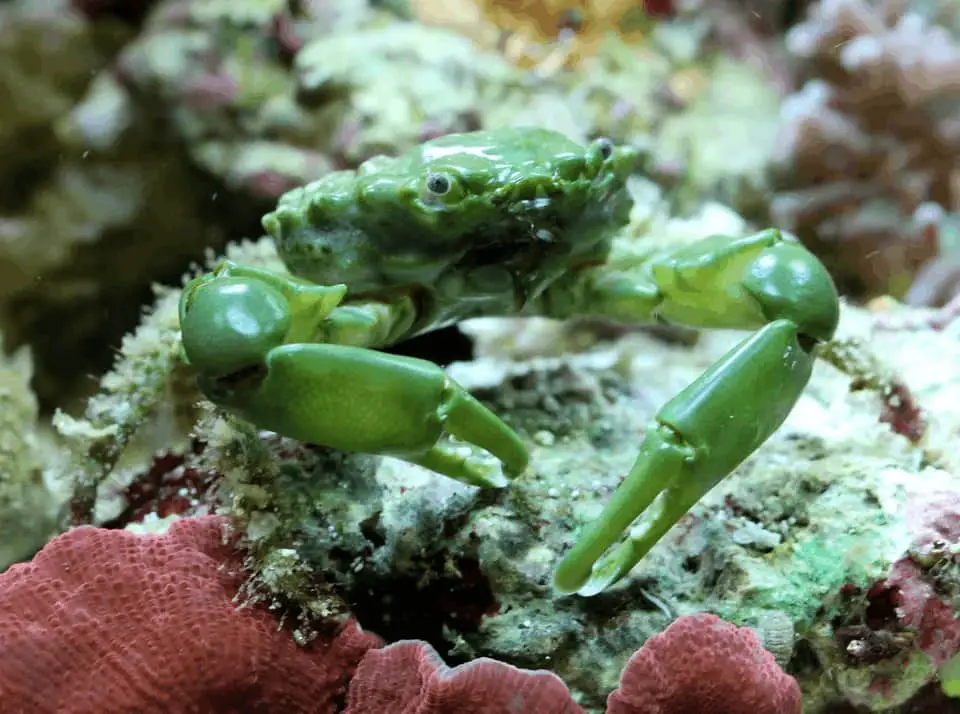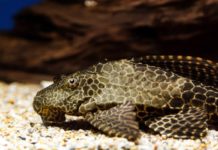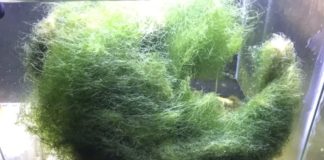Is Your Emerald Crab Turning White?
The emerald crab is a saltwater invertebrate that’s normally used as part of a clean-up crew in marine aquariums. If you’ve noticed your emerald crab turning white, then don’t worry, as this is probably happening because the crab is going through the molting process. The reason this happens is because, unlike most other animals, crabs in general, including emerald crabs, cannot grow in a linear fashion due to their exoskeleton (the hard shell) not growing. Therefore, their shells often go through a process referred to as molting.
This article will discuss in depth the molting process of the emerald crab, how often they molt and what to expect.
How Often Will Your Emerald Crab Molt?
During their entire life cycle, emerald crabs can molt upwards of 20 times, including when they are larvae. Molting is much more frequent in younger crabs which are still growing (typically up to once every few weeks) compared to older crabs which are older (typically every few months).
However, the above is just a rough gauge. There’s no set schedule for the molting process. Rather than going through the process as a schedule, emerald crabs will molt when they need to. How often your emerald crab molts will depend on a few factors, including the water conditions, availability of food, and the crab’s growth rate. This means that the faster the emerald crab grows, the more often the molting process will occur.
Molting And Hiding Places
Like most other crabs, emerald crabs will molt from time to time. When the crab outgrows their current shell, it’ll need to go through the molting process.
During the molting process, the emerald crab leaves behind an empty shell, which it will then hide for several days. Some of the hidden items will remain hidden for a week or more. The reason they do this is because they’re vulnerable within their new shell, which is softer. As they don’t yet have the hard exoskeleton to protect them, they will stay hidden. Consequently, if you are keeping crabs in a community tank with other crabs or fish, you’re going to need to provide them with a lot of hiding places.
What Should You Do With The Old Exoskeleton?
The shell shouldn’t be removed from the tank. It is believed that crabs eat their molt once they shed their skin, to regenerate the energy they lost during the molting process. It’s also beneficial for any of the other creatures in the aquarium as well!
How Long Does An Emerald Crab Molt For?
Emerald crab can undergo molting within a matter of hours. During this period, it will hide or remain motionless for a few days until their exoskeleton hardens.
What To Do After Emerald Crab Molts?
You shouldn’t do anything. You should leave your emerald crab alone. While their new exoskeleton is forming, your crab is absolutely helpless until its new exoskeleton hardens. It’s best to leave the emerald crab alone for a few days.
How Long Do Emerald Crabs Live?
The life of an emerald crab in the wild can last from 2 to 4 years. However, they’re capable of living more than a couple of years in a captive environment such as a tank if proper care is taken, such as proper diet, water parameters, breeding, and avoiding crowding so that they can live in peace.
Conclusion
During the Emerald crabs’ life, molting is an essential and ongoing physiological process. Molting plays a critical role in the development of the emerald crab. Additionally, it’s a slow, delicate process. While the molting process is taking place, avoid bothering your Emerald crab.








